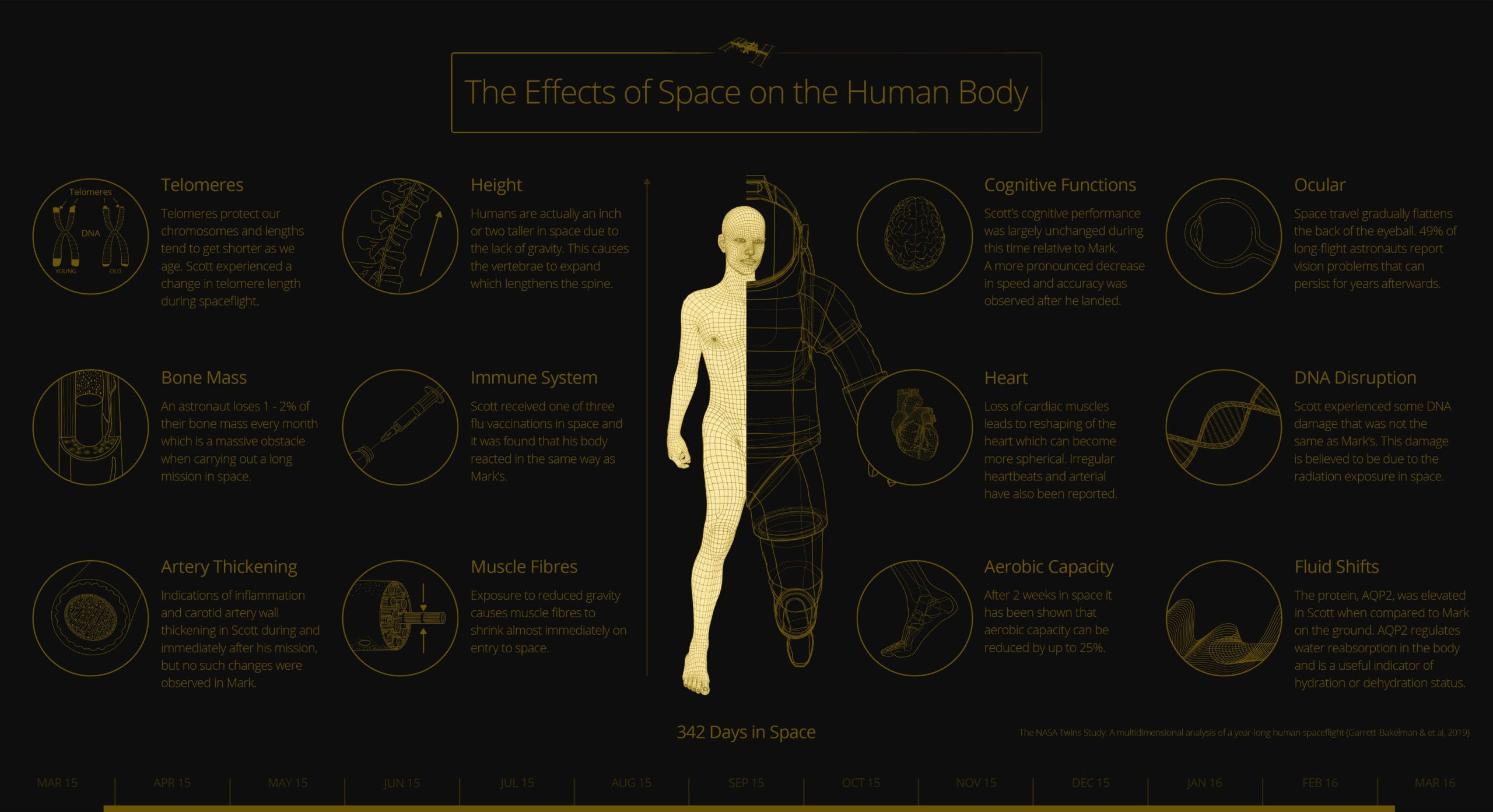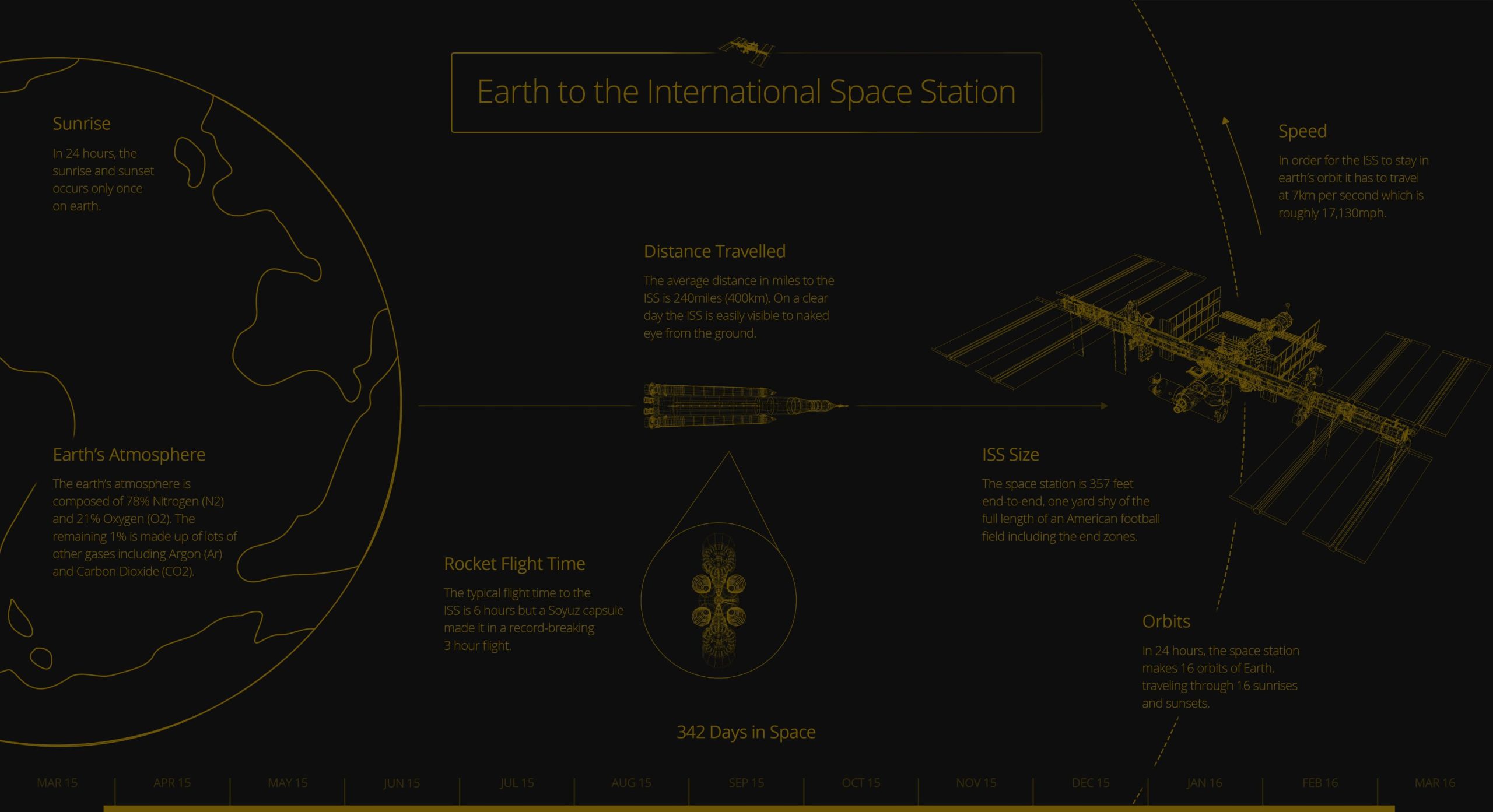342 Days in Space
Based on NASA’s twin study
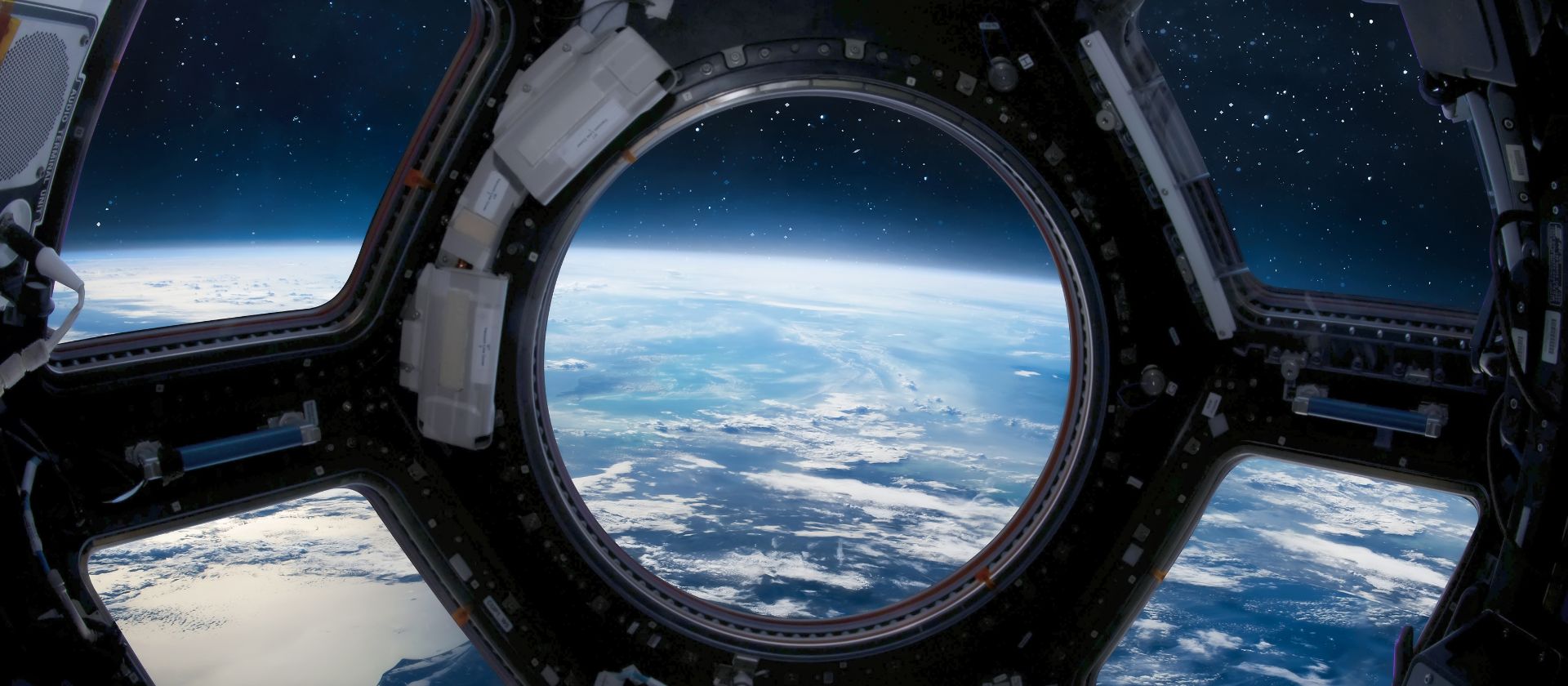
The NASA Twins Study, conducted from 2015 to 2016, aimed to investigate the effects of long-duration space travel on the human body by comparing Scott Kelly’s physical and genetic changes with those of his identical twin brother, Mark Kelly, who remained on Earth. The study provided valuable insights into the physiological and psychological impact of extended stays in space and the challenges faced by astronauts during long-duration missions.
The brief
The brief for this unit was based around timeframes, where I challenged myself to create two static visualisations that worked together to allow the audience to understand the given timeframe. The visualisations could show two complementary views or contrasting views.
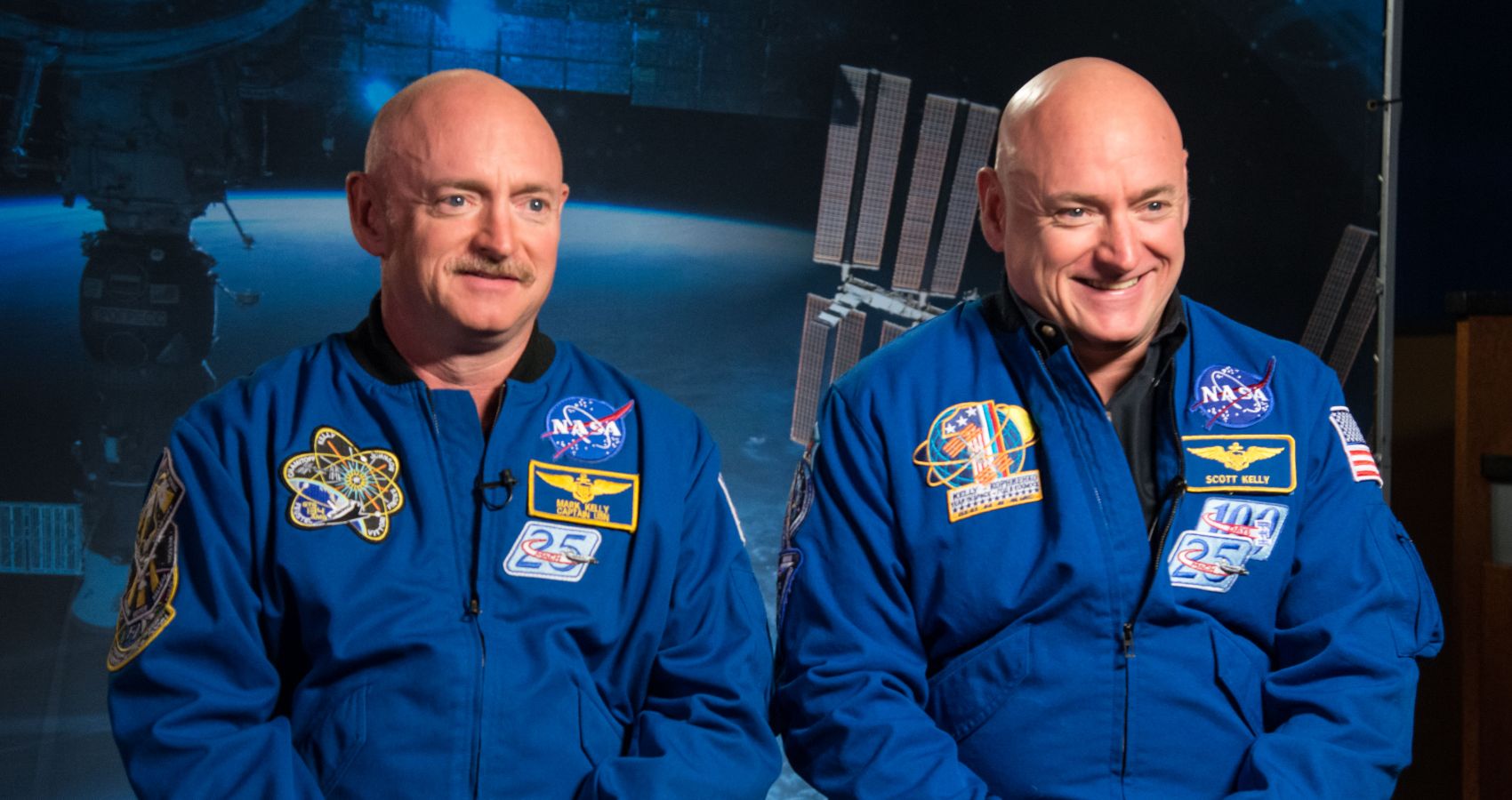
The Twins
Meet the Kelly’s
Scott Kelly (on the right) spent nearly a year (342 days) aboard the International Space Station (ISS) from March 2015 to March 2016. During this extended duration in space, he served as the primary subject of the study. Throughout his mission, Scott underwent numerous medical and physiological tests, collected biological samples, and recorded data to monitor his physical and mental well-being.
Mark Kelly (on the left), Scott’s identical twin brother, served as the control subject for the study. While Scott was in space, Mark remained on Earth, living a similar lifestyle to provide a baseline for comparison. Mark underwent the same medical tests, collected biological samples, and shared his data with researchers to establish the changes specific to Scott’s space mission.

The Twins
Meet the Kelly’s
Scott Kelly (on the right) spent nearly a year (342 days) aboard the International Space Station (ISS) from March 2015 to March 2016. During this extended duration in space, he served as the primary subject of the study. Throughout his mission, Scott underwent numerous medical and physiological tests, collected biological samples, and recorded data to monitor his physical and mental well-being.
Mark Kelly (on the left), Scott’s identical twin brother, served as the control subject for the study. While Scott was in space, Mark remained on Earth, living a similar lifestyle to provide a baseline for comparison. Mark underwent the same medical tests, collected biological samples, and shared his data with researchers to establish the changes specific to Scott’s space mission.
Beginning with a photograph, I used Adobe Illustrator and Procreate to create graphics in a technical style. Crafting a variety of different components that were then used across both visualisations.
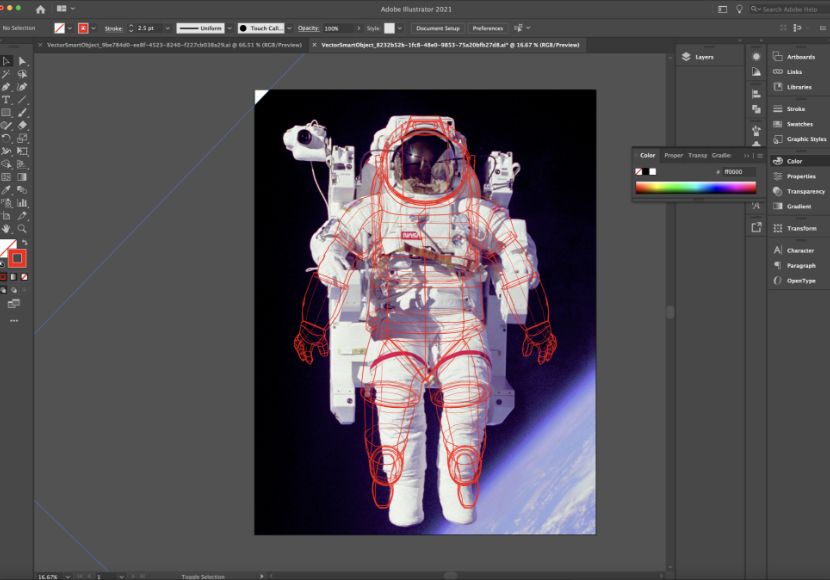
The Twins
Meet the Kelly’s
Scott Kelly (on the right) spent nearly a year (342 days) aboard the International Space Station (ISS) from March 2015 to March 2016. During this extended duration in space, he served as the primary subject of the study. Throughout his mission, Scott underwent numerous medical and physiological tests, collected biological samples, and recorded data to monitor his physical and mental well-being.
Mark Kelly (on the left), Scott’s identical twin brother, served as the control subject for the study. While Scott was in space, Mark remained on Earth, living a similar lifestyle to provide a baseline for comparison. Mark underwent the same medical tests, collected biological samples, and shared his data with researchers to establish the changes specific to Scott’s space mission.
